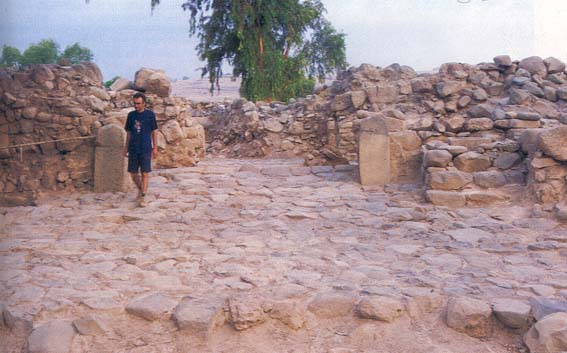Image Details

Courtesy Bethsaida Excavations
Filling a niche. The head-on view in the photo is what ninth-century B.C.E. visitors would have seen as they approached Bethsaida’s inner gate. Cut into each tower was a niche used for cultic purposes; perhaps visitors or residents paused here before entering the city to offer thanks for the safe completion of a journey. The niche in the right tower contained two steps leading up to a smooth basalt basin. Around the niche the authors discovered five pieces of a shattered basalt stele depicting a bull-headed, horned figure bearing a dagger—perhaps a representation of Bethsaida’s chief deity. The 3-foot-tall stele probably stood behind the basin; worshipers would have made an offering to the god by mounting the steps and pouring a libation into the basin or by burning incense in a small cup (two small incense burners were found on the basin).
The niche in the left tower was also used in cultic worship. A shelf 5 feet high may have served as a Biblical bamah, or high place. Interestingly, this niche was not stepped like its counterpart, but approached via a smooth walkway. The excavators ask whether this was in keeping with the ban on stepped altars in Exodus 20:26. Might this niche have been used by visiting Israelites, or perhaps by Israelites married to Geshurites?
